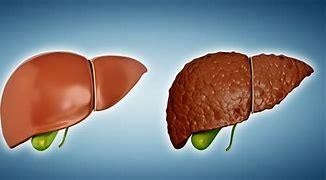Older adults generally mount lower immune responses to vaccines. Which age-related change is likely to contribute to these lower immune responses?
Lower number of complement proteins
Decreased populations of naïve T cells
Impaired primary defenses
Insufficient time outdoors
The Correct Answer is B
Naïve T cells are a type of white blood cell that has not encountered a specific antigen before and are ready to respond to new infections. As people age, the number of naïve T cells decreases due to the shrinking of the thymus gland, which produces and matures T cells. This reduces the ability of the immune system to recognize and fight new pathogens and lowers the effectiveness of vaccines.
Nursing Test Bank
Naxlex Comprehensive Predictor Exams
Related Questions
Correct Answer is D
Explanation
Cirrhosis is a chronic liver disease that causes fibrosis, nodular regeneration, portal hypertension, and liver failure. Cirrhosis can cause various symptoms and signs such as nausea, vomiting, abdominal pain, pruritus, edema, ascites, jaundice, spider angiomas, palmar erythema, gynecomastia, splenomegaly, varices, hepatic encephalopathy, and coagulopathy. Cirrhosis can also cause elevated liver enzymes such as alanine aminotransferase and aspartate aminotransferase due to hepatocellular injury or necrosis.

Correct Answer is D
Explanation
More H and HCO3 form, decreasing the blood's pH.
Rationale: Hypoventilation is a condition where the breathing rate is too slow or shallow, resulting in insufficient removal of carbon dioxide (CO2) from the body. CO2 reacts with water (H2O) to form carbonic acid (H2CO3), which can dissociate into hydrogen ions (H+) and bicarbonate ions (HCO3-). Therefore, when CO2 accumulates in the blood due to hypoventilation, more H2CO3 is formed, which lowers the blood's pH by increasing the concentration of H+ and HCO3-.
Whether you are a student looking to ace your exams or a practicing nurse seeking to enhance your expertise , our nursing education contents will empower you with the confidence and competence to make a difference in the lives of patients and become a respected leader in the healthcare field.
Visit Naxlex, invest in your future and unlock endless possibilities with our unparalleled nursing education contents today
Report Wrong Answer on the Current Question
Do you disagree with the answer? If yes, what is your expected answer? Explain.
Kindly be descriptive with the issue you are facing.
